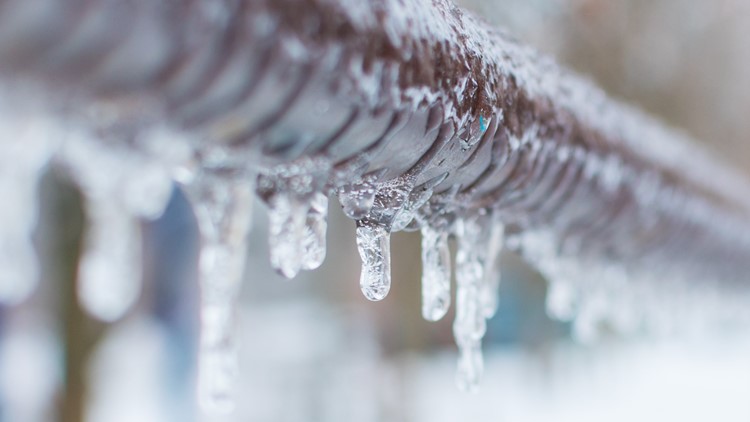Shielding Pipes from Freezing Damage: Key Approaches
Shielding Pipes from Freezing Damage: Key Approaches
Blog Article
What are your insights and beliefs about Helpful Tips to Prevent Frozen Pipes this Winter?

Cold weather can damage your plumbing, especially by freezing pipelines. Right here's just how to stop it from taking place and what to do if it does.
Intro
As temperature levels decrease, the threat of icy pipes increases, possibly leading to costly repairs and water damages. Comprehending how to stop icy pipes is vital for homeowners in cool environments.
Understanding Frozen Pipelines
What causes pipelines to ice up?
Pipes ice up when subjected to temperature levels listed below 32 ° F (0 ° C) for expanded durations. As water inside the pipelines ices up, it expands, taxing the pipeline wall surfaces and possibly triggering them to burst.
Risks and problems
Icy pipelines can cause supply of water disruptions, home damages, and costly repairs. Ruptured pipelines can flooding homes and cause extensive structural damages.
Indicators of Frozen Pipes
Determining frozen pipes early can stop them from bursting.
Just how to identify frozen pipes
Seek decreased water flow from faucets, unusual odors or noises from pipelines, and noticeable frost on exposed pipes.
Avoidance Tips
Shielding susceptible pipelines
Cover pipelines in insulation sleeves or make use of warmth tape to secure them from freezing temperature levels. Focus on pipes in unheated or outside areas of the home.
Heating methods
Keep interior spaces sufficiently heated up, particularly areas with pipes. Open up cabinet doors to enable warm air to flow around pipes under sinks.
Shielding Outside Plumbing
Yard hose pipes and exterior faucets
Separate and drain yard pipes prior to winter season. Mount frost-proof spigots or cover exterior faucets with insulated caps.
What to Do If Your Pipelines Freeze
Immediate actions to take
If you suspect icy pipes, maintain taps open up to ease stress as the ice melts. Make use of a hairdryer or towels taken in hot water to thaw pipelines gradually.
Long-Term Solutions
Architectural changes
Consider rerouting pipes far from outside walls or unheated locations. Include extra insulation to attics, basements, and crawl spaces.
Upgrading insulation
Purchase high-grade insulation for pipelines, attics, and wall surfaces. Appropriate insulation helps maintain regular temperature levels and minimizes the risk of frozen pipes.
Final thought
Protecting against icy pipelines requires proactive actions and quick actions. By recognizing the reasons, indications, and safety nets, homeowners can secure their plumbing during winter.
6 Proven Ways to Prevent Frozen Pipes and Protect Your Home
Disconnect and Drain Garden Hoses
Before winter arrives, start by disconnecting your garden hoses and draining any remaining water. Close the shut-off valves that supply outdoor hose bibs and leave the outdoor faucet open to allow any residual water to drain. For extra protection, consider using faucet covers throughout the colder months. It’s also important to drain water from any sprinkler supply lines following the manufacturer’s directions.
Insulate Exposed Pipes
Insulating your pipes is an effective way to prevent freezing. Pipe insulation is readily available at home improvement stores and is relatively inexpensive. Pay close attention to pipes in unheated areas such as the attic, basement, crawl spaces, or garage. Apply foam insulation generously to create a buffer against the cold. You can also wrap your pipes in heat tape or thermostat-controlled heat cables for added warmth.
Seal Air Leaks
Inspect your home for any cracks or openings that could let in cold air. Seal any holes around the piping in interior or exterior walls, as well as the sill plates where your home rests on its foundation. Additionally, make sure to keep your garage door closed unless you’re entering or exiting. Leaving it open creates a significant air leak that can lead to frozen pipes.
Allow Warm Air Circulation
During cold snaps, it’s essential to allow warm air to circulate evenly throughout your home. Leave interior doors ajar to promote better airflow. Open kitchen and bathroom cabinets to help distribute heat consistently around the rooms. If you have small children or pets, be sure to remove any household chemicals or potentially harmful cleaners from open cabinets for safety.
Let Faucets Drip
A small trickle of water can make a big difference in preventing ice formation inside your pipes. When temperatures drop significantly, start a drip of water from all faucets served by exposed pipes. This continuous flow helps prevent the water from freezing. Additionally, running a few faucets slightly can relieve pressure inside the pipes, reducing the chances of a rupture if the water inside does freeze.
https://choateshvac.com/6-proven-ways-to-prevent-frozen-pipes-and-protect-your-home/

I came across that article on How to prepare your home plumbing for winter weather while doing a search on the search engines. Remember to take a moment to share this blog post if you appreciated it. Bless you for your time. Revisit us soon.
Call Today Report this page